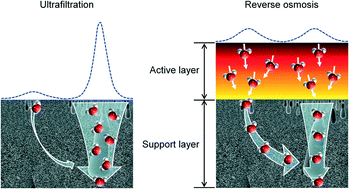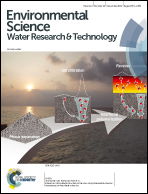Influence of the sublayer structure of thin-film composite reverse osmosis membranes on the overall water flux†
Abstract
We found that a support layer of a reverse osmosis (RO) membrane could have a significant effect on the membrane filtration efficiency. To be specific, we determined that the pressure drop occurring in the support layer during the RO operation can increase such that it affects the overall water flux, as a dense sponge-like structure and closed finger-like structure become predominant in the support layer. This considerable resistance was assumed to occur while more water passes through tortuous and segmented regions after being evenly discharged from the active layer. This hypothesis was supported by the estimated pressure drop using the Ergun equation and the tortuosity obtained from a forward osmosis test conducted to better reflect the influence of the sponge-like region. We attempted to factor in all of the parameters used in the Ergun equation in order to determine the main cause of the high pressure drop, and the tortuosity was found to be dominant. An interesting finding was that the tortuosity of the support layer can also significantly influence the overall water flux, even during the RO process. Moreover, the above phenomenon can become much more obvious when the active layer is highly permeable, suggesting that the support layer must be considered alongside the active layer when developing thin-film composite membranes with a highly permeable active layer. Overall, we concluded that the concentration of the polymer solution should be less than 20 wt% to ensure the best performance when preparing a support layer for brackish-water RO membranes.



 Please wait while we load your content...
Please wait while we load your content...